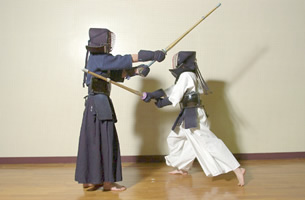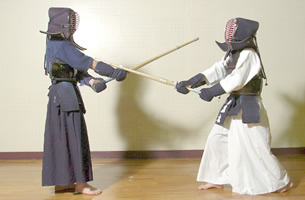 |
THE
ART
What youngsters go through to master a traditional art or craft. |
|||||
| Basic Knowledge About Kendo | ||||||
|
What is kendo? Kendo is a sport that places great importance on etiquette. A kendo contest begins with the contestants exchanging formal bows and ends with another exchange of courtesy. This courteous bow is called rei in Japanese. The motion expresses a person's wish for victory, respect to their instructors, and gratitude to the friends who practice with them. People who practice kendo (sometimes called kendoists) are ranked according to ability and the length of time they have dedicated themselves to the sport. A beginner is ranked as seventh kyu, or rank. There are tests to pass when moving up to the next rank; after heading through sixth kyu, fifth kyu, and all the way up to first kyu, a kendoist moves into a new series: dan. Beginning Dan is the lowest of these, and it is followed by first Dan, second Dan, and so on. Tenth Dan is the highest rank possible in the world of kendo. |
||||||
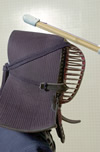 |
A strike to the head, or men. |
|||||
| In
an actual bout, the aim is to strike your opponent on the body, but not
just anywhere. There are designated strike zones, and the contestant must
call out the name of the strike zone when making the strike. There are
three strike zones: the head, trunk, and forearm (men, do,
and kote, respectively, in Japanese). Actually, there is also a
fourth strike zone--tsuki, or the part of the throat beneath the
head and shoulder protector--but this is considered dangerous and is not
permitted for children up to middle school age. In kendo, strikes on any
other parts of the body do not score points. The time limit on a contest
is five minutes. The contestant who is the first to score two points is
the winner.
|
||||||
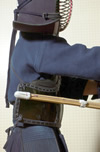 |
A strike to the trunk, or do. |
|||||
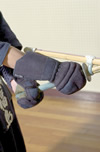 |
A strike to the forearm, or kote. |
|||||
| Photos on the left row (from top): A blow to the opponent's head; a blow to the opponent's trunk; a blow to the opponent's arm. |

